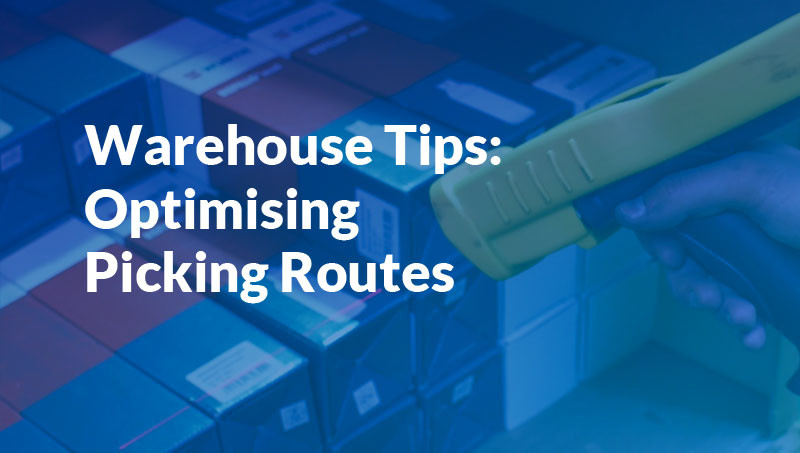Keymas K-Store: an application to rejuvenate your warehouse
- Examine your current warehouse operation
- Talk to your pickers!
- Consider Zoning
- Implement Keymas K-Store
Examine your current warehouse operation
So, you have a warehouse and want to make it run as efficiently and effectively as possible. Let’s look at the warehouse: The goods are stored on racks that are arranged in rows and are on multiple levels. There’s a standard distance between the racks allowing access to human pickers and forklift trucks. Pickers are given a paper copy of an order and then pick the items on the order from the racks. Your warehouse also has clearly & methodically labelled racking and the pickers are experienced and used to the layout of the warehouse.
Other factors in the picking equation might include:
- How many rows of racking or shelving does the warehouse have?
- How many pickers are there and how are their routes organised currently?
- How many items are stocked?
- Are there bulky and/or weighty items unsuitable for manual handling?
All these factors need to be considered to optimise a picking system. Taking an overarching approach will give you the best overview of how your current system works.
Talk to your pickers!
Talk to your pickers! They are the people who walk up and down your aisles day after day. They will have a good idea of what is picked. If prompted they may also tell you a few home truths about your system. For example, illogical racking locations of goods meaning they have to walk extra distances when picking compatible items. This sort of constructive feedback can be used to improve the overall performance of the system.
Consider Zoning
Carefully consider zoning, i.e. placing certain items in one specific zone or area. Perhaps the items are related or combined, or maybe you want to keep heavier/bulkier items in one location. Whatever the reason, it means you’re starting to closely examine what goes where and why. That is good.
If you have access to past order data, collate this into a format that allows you to examine it in detail. If certain goods are often ordered at the same time locate them near to each other. Past data will allow you to assess if this happens, how often, and whether it is actually feasible to locate the goods close to each other.
Once you have your zones organised, ensure that they are used effectively. The best way to do this is to have as few pickers as possible walking in the zone to reduce congestion. To do this, your order picking system needs to be refined so that the picking routes identify which picker(s) operate in which zones. This is where things can start to get complicated!
Implement Keymas K-Store
One way of simplifying this whole procedure is to implement Keymas K-Store. K-Store has been designed from the ground up to streamline warehouse operations; from goods in all the way through to despatch. Employing barcode and wireless technology run through ordinary PC workstations; using K-Store goods can be handled in the most effective way possible as they pass through your warehouse. Picking routes are just one way in which systems can be enhanced.
Taking a typical order processed with K-Store, your pickers will be given their orders via hand-held scanners. These scanners will tell them on a screen what is to be picked, where it is located, which particular batch of a product is to be and where it is to be packed. Because each product is scanned as it is picked, if a picker makes a mistake they will be told so instantly and pointed to how and where they can correct the error.
Add zoning into the equation and you have a warehouse that will be operating very efficiently indeed. Paper-based picking offering no such sophistication will be a thing of the past. K-Store will also update your stock levels instantly, enabling you in time to tweak your buffers to optimal levels, saving you even more.
Once K-Store is up and running, operators will know that their pickers are using routes and zones that are efficiently planned and make best use of their time; goods will be handled in a way that takes into account their shelf life and fragility; K-Store can produce reports on demand showing what was picked, when and by whom.
There are some prerequisites before K-Store can be implemented:
- First and foremost: a commitment to make it work from all concerned
- The means to barcode every product entering & leaving the premises and every product location within the premises.
- An honest self-assessment of the current operation and clearly thought through ideas on how you want it to operate after K-Store implementation
- In conjunction with 3, the ability to move products, where necessary, into zones, and to implement other changes necessary to streamline operations
Keymas K-Store is our application for managing warehouses. Operators implementing K-Store are given full control of their goods; from goods in, via sophisticated stock control features, all the way to despatch.
Combine K-Store with a physical makeover of your existing warehouse system and you will have a very sophisticated system delivering total control of your material handling operation. Contact us now for a no-obligation consultation and rest assured that we will make our solutions fit your needs – not vice-versa!
Keymas are a conveyor systems and automation company. Contact us today to find out how we can help automate your business
Contact Us

